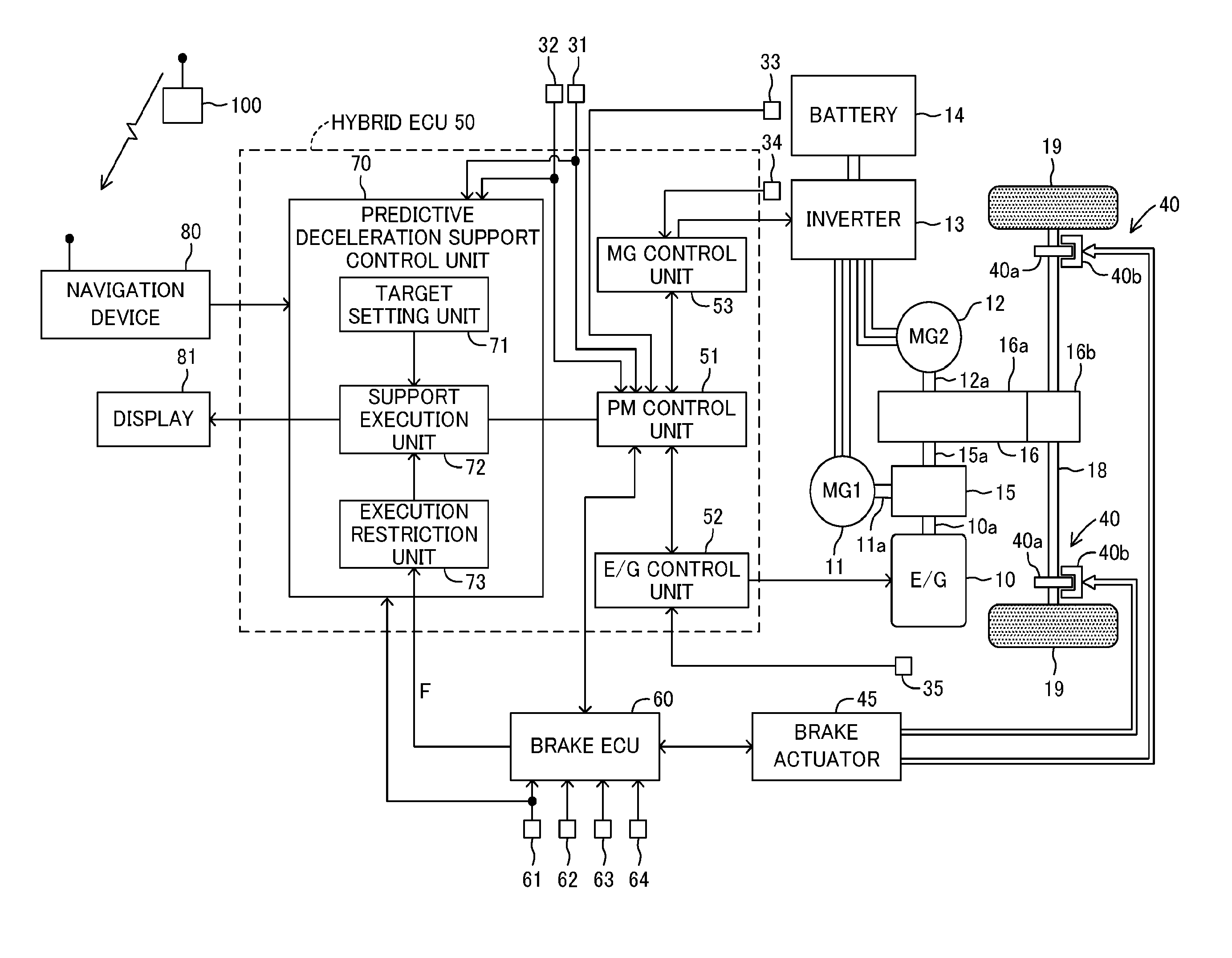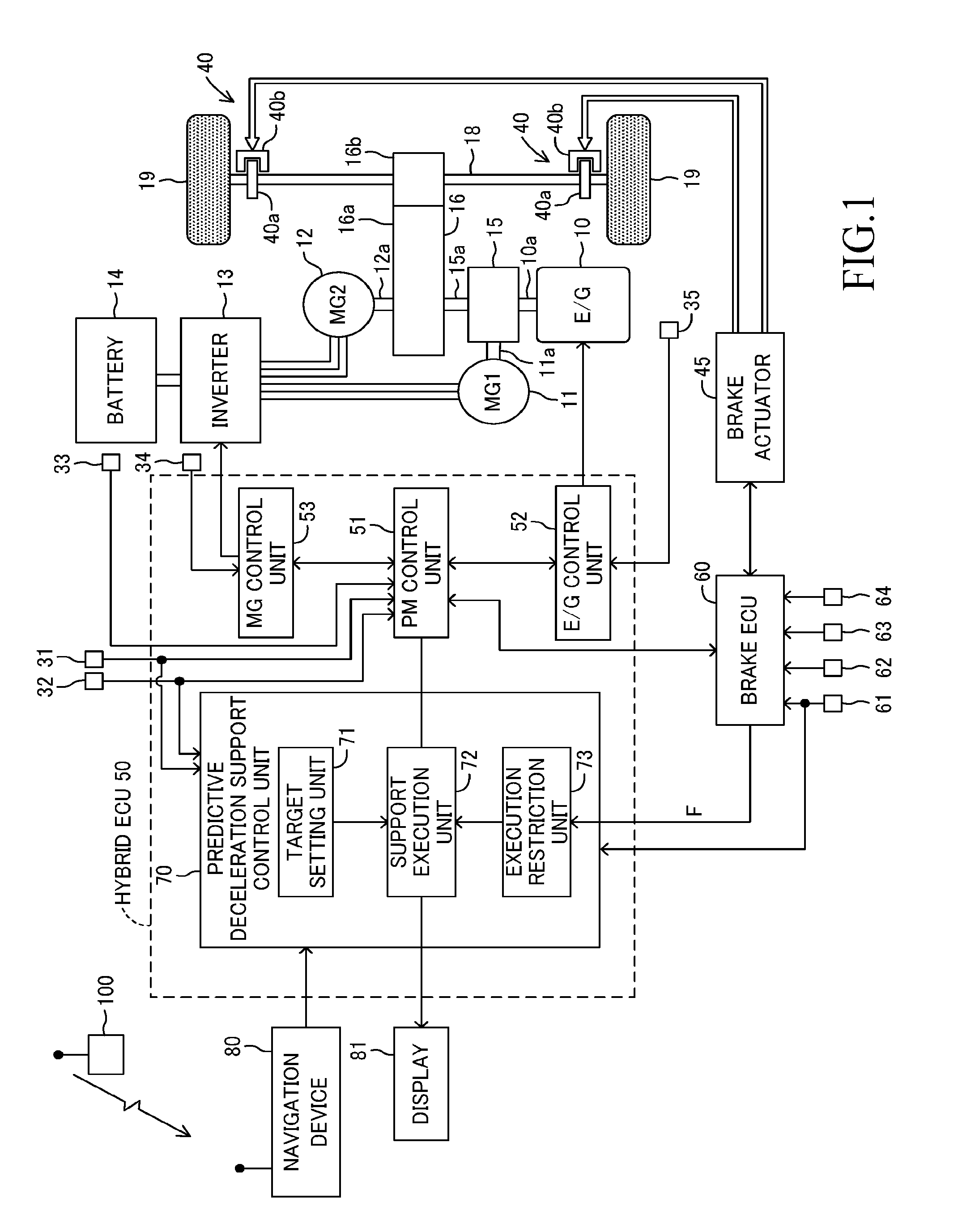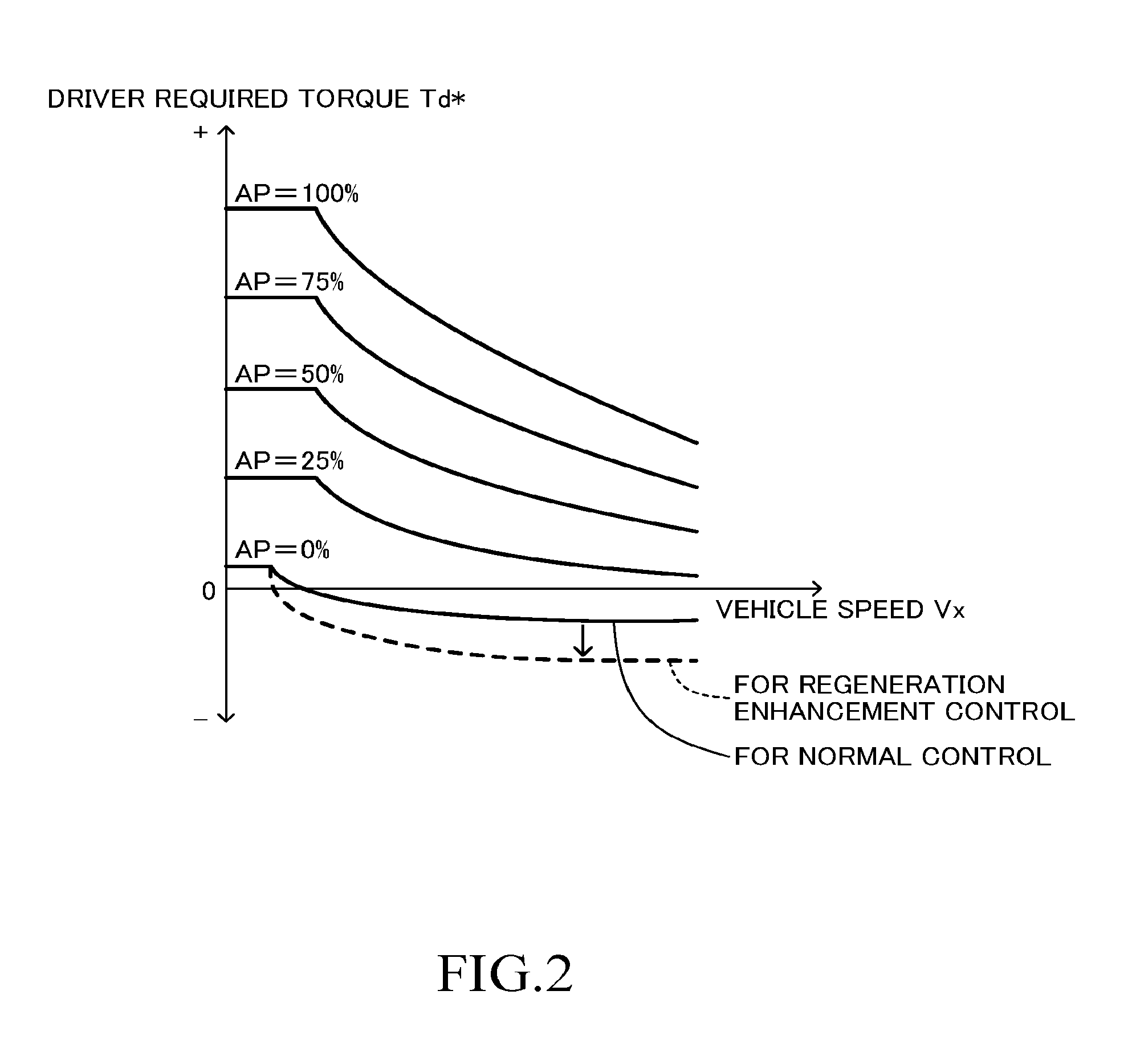Vehicle control device
a technology of vehicle control and control device, which is applied in the direction of braking system, braking components, propulsion by batteries/cells, etc., can solve the problems of insufficient braking force, ineffective use of rotational energy of wheels, and limited braking force that can be generated by electric power regeneration, etc., to inhibit unnecessary notification and regeneration enhancement control
- Summary
- Abstract
- Description
- Claims
- Application Information
AI Technical Summary
Benefits of technology
Problems solved by technology
Method used
Image
Examples
Embodiment Construction
[0040]Referring to the accompanying drawings, an embodiment of the present invention is described in detail below. FIG. 1 is a schematic system configuration diagram for illustrating a vehicle control device according to an embodiment of the present invention.
[0041]A vehicle on which the vehicle control device according to this embodiment is installed is a hybrid vehicle. This vehicle includes an engine 10, a first motor generator 11 (referred to as first MG 11), a second motor generator 12 (referred to as second MG 12), an inverter 13, a battery 14, a power distribution mechanism 15, a driving force transmission mechanism 16, and a hybrid electronic control unit 50 (referred to as hybrid ECU 50) as a travel drive device.
[0042]The engine 10 is a gasoline engine or a diesel engine.
[0043]The power distribution mechanism 15 is configured to distribute a driving force of the engine 10 to power for driving an output shaft 15a of the power distribution mechanism 15 and power for driving t...
PUM
 Login to View More
Login to View More Abstract
Description
Claims
Application Information
 Login to View More
Login to View More - R&D
- Intellectual Property
- Life Sciences
- Materials
- Tech Scout
- Unparalleled Data Quality
- Higher Quality Content
- 60% Fewer Hallucinations
Browse by: Latest US Patents, China's latest patents, Technical Efficacy Thesaurus, Application Domain, Technology Topic, Popular Technical Reports.
© 2025 PatSnap. All rights reserved.Legal|Privacy policy|Modern Slavery Act Transparency Statement|Sitemap|About US| Contact US: help@patsnap.com



